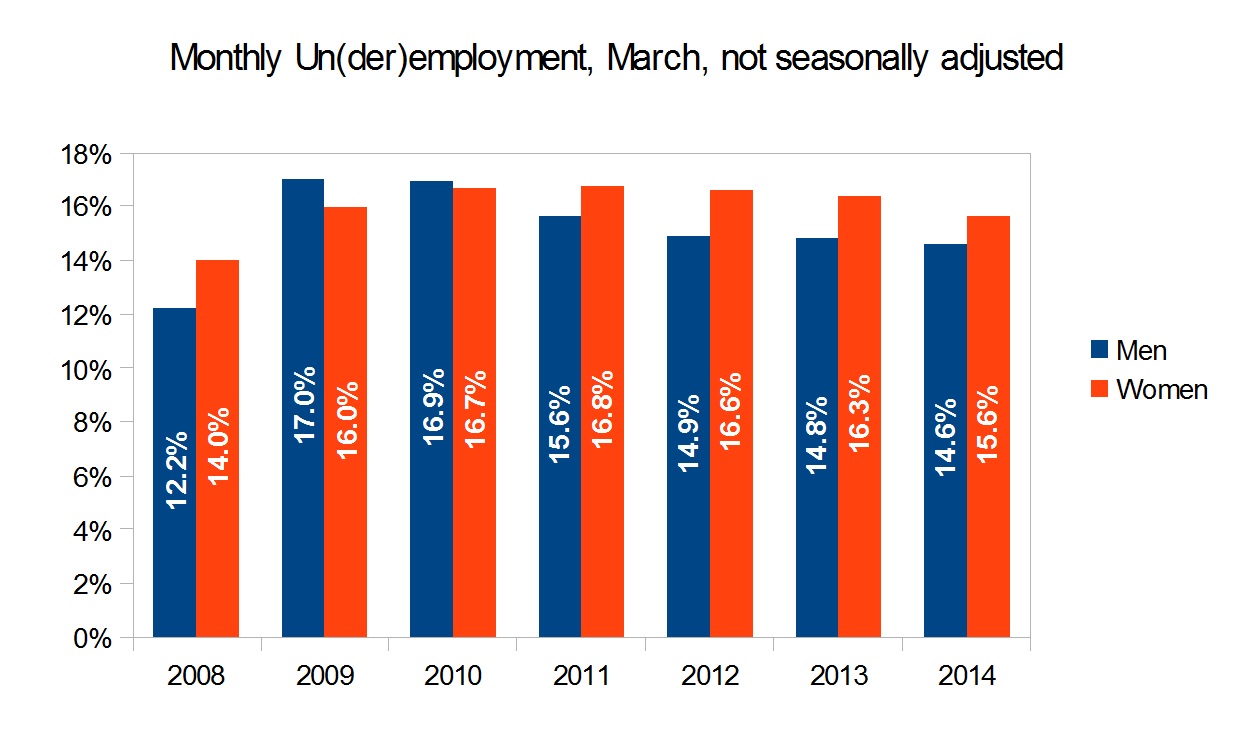As Armine Yalnizyan has pointed out recently, women play a key role in economic recoveries (she says it so well, I have to quote her directly):
Every recession is a “he-cession”: men lose more jobs than women in a downturn because the first thing to slow is the production in goods-producing industries that are typically male-dominated (mining, forestry, construction, manufacturing). Every early stage of recovery is a “she-covery”: men who lose $30 an hour jobs wince at accepting $15 an hour offers, but women grab them to make sure the bills get paid.
This shows up in the underemployment rate, which captures the large number of women who work part-time jobs while they’re still looking for full-time work.
Let’s compare seasonally unadjusted underemployment rates for men and women over the past seven March(s). In the midst of the recession (March 2009), men’s underemployment rate was higher than women’s. While men’s underemployment rate fell between 2009 and 2011, women’s actually rose, and peaked in 2011.
This evidence supports the need for public sector investment/stimulus spending that is outside traditional physical infrastructure. A two-pronged approach is required, where we both encourage young women to enter the skilled trades and invest in social infrastructure such as early child care and education.
Pay equity legislation and living wages are key as well. Because while it’s admirable that women are willing to work low wage part-time jobs to make sure their family has enough to eat, this ends up depressing wages in female-dominated sectors such as retail and food services. This contributes to increasing inequality.

On this #EqualPayDay2014, I’d just like to point out the gross unfairness of women’s wages already. Go ahead and tell me that women work fewer (paid) hours, or in different occupations, I will tell you that is part of the systemic problem keeping women’s wages low.
Note in the above graph that women in each age/job permanence category gained fewer jobs (or lost more) between 2009 and 2013. Also note, that in each category women’s weekly wages are depressingly far behind their male counterparts.
And always, this data comes with the caveat that the situation is far worse for racialized women, women new to Canada, or women living with disabilities.
Something’s gotta give.



